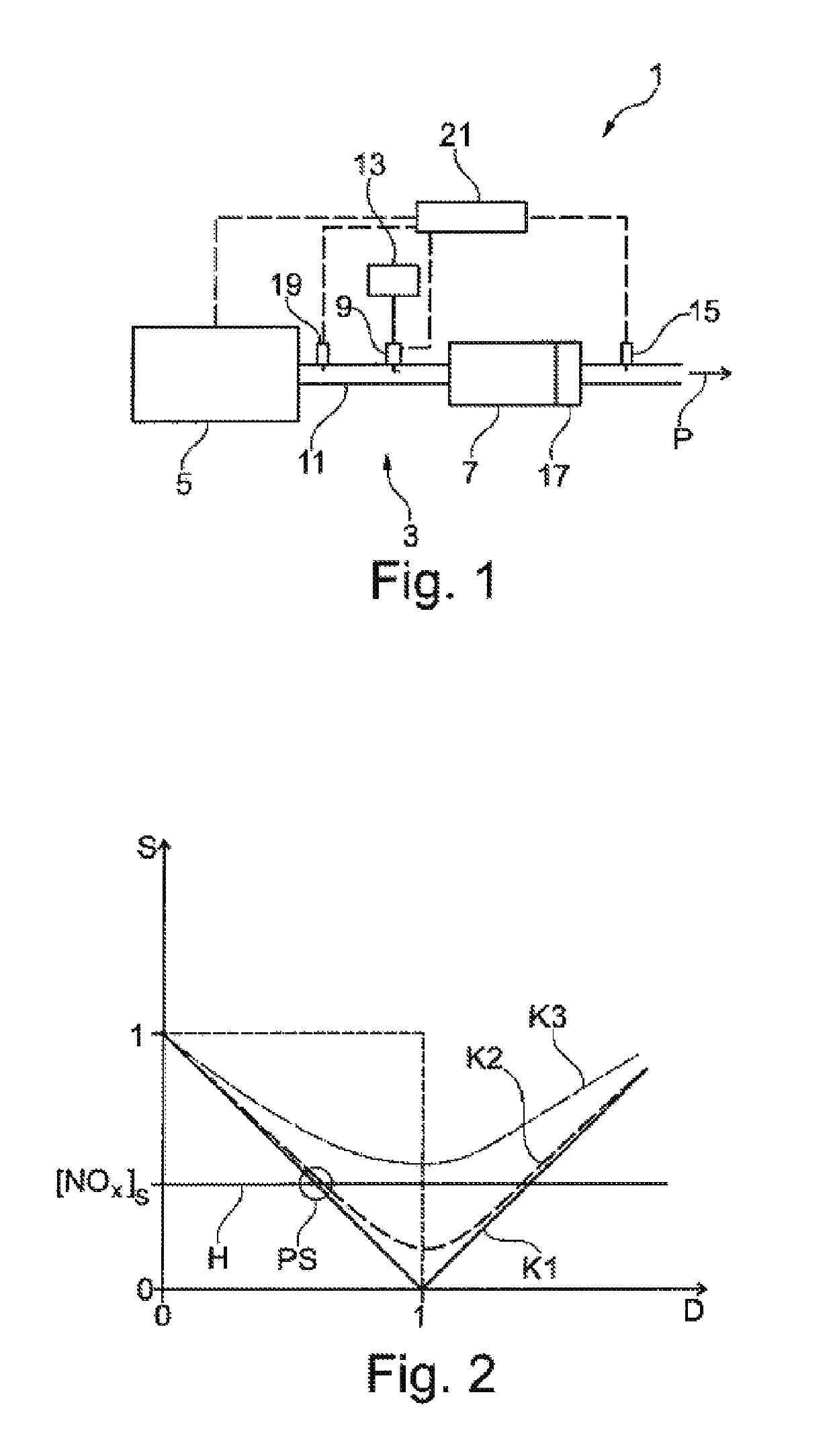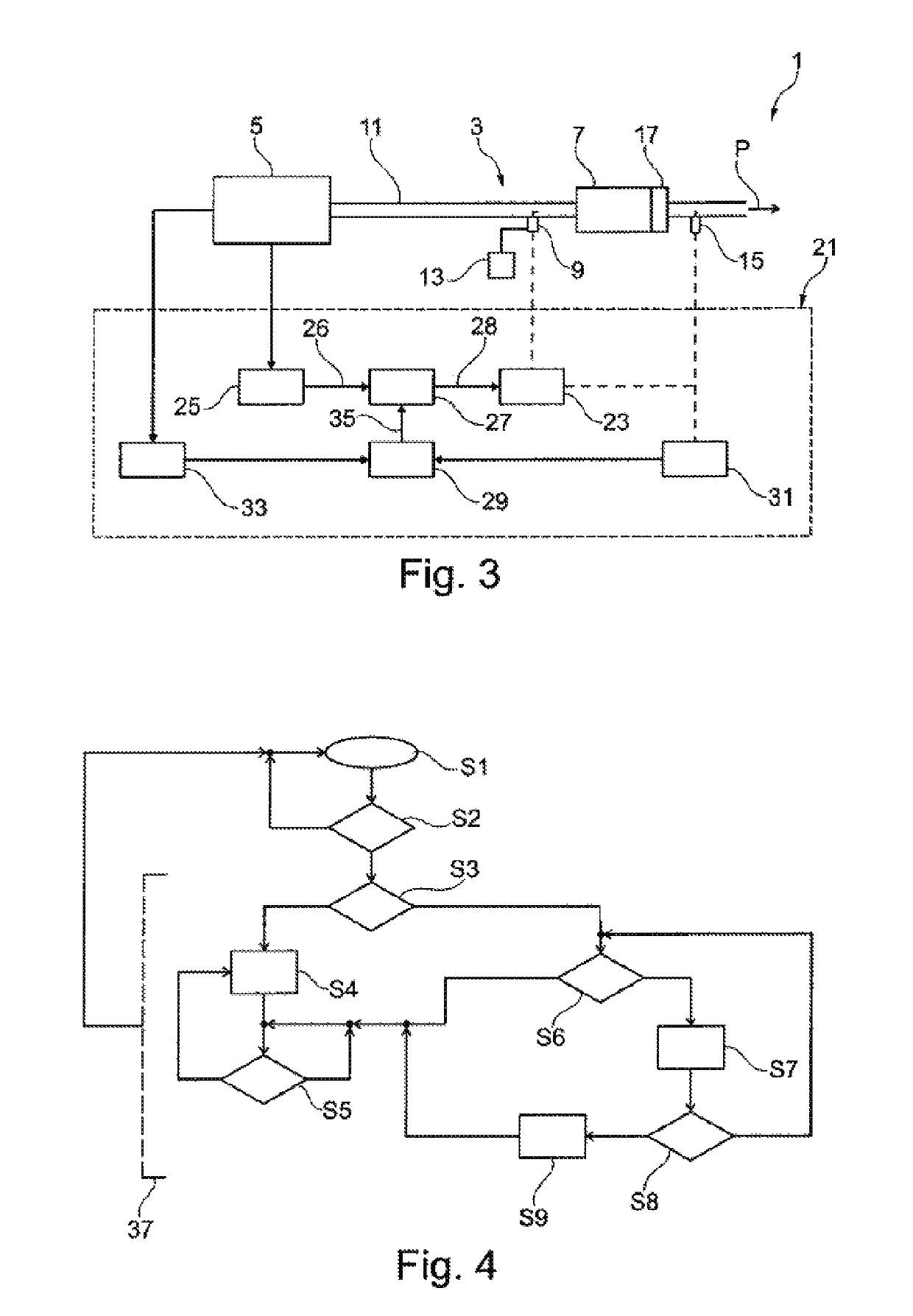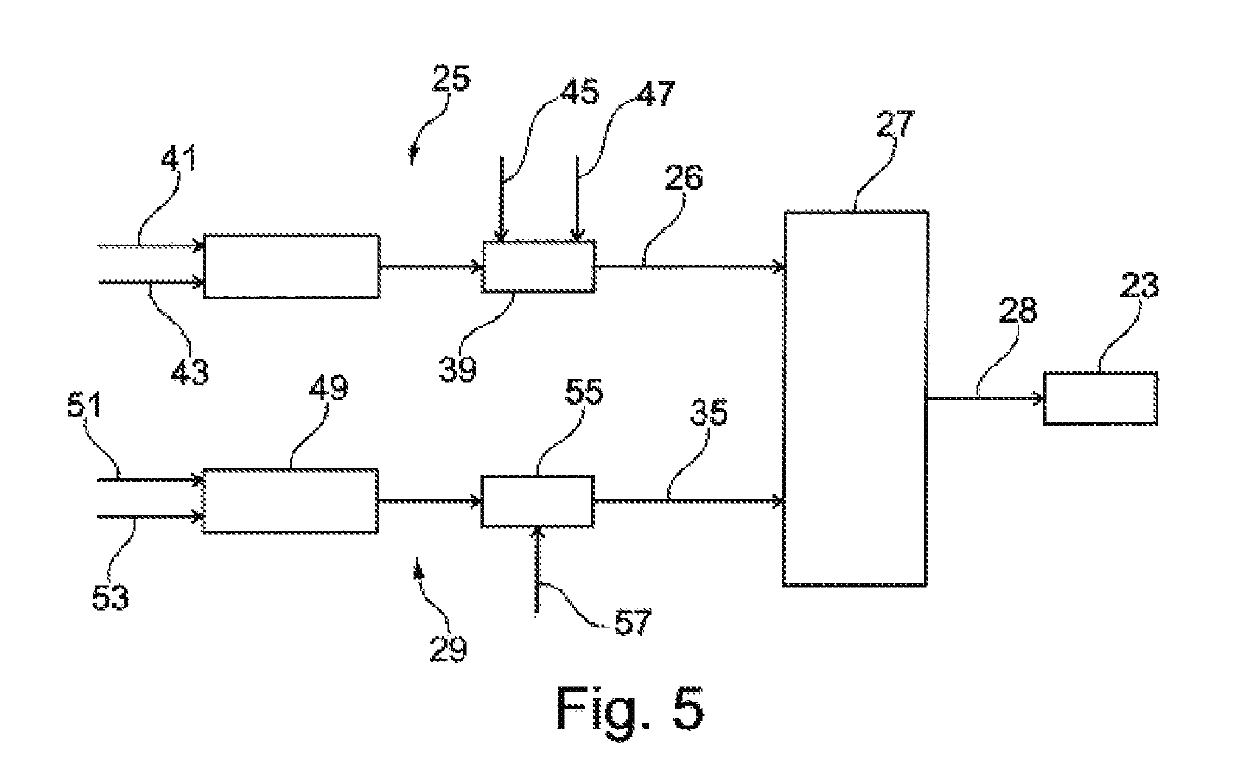Method for operating an exhaust after-treatment system comprising an SCR-catalyst
an exhaust aftertreatment and scrcatalyst technology, which is applied in the direction of exhaust treatment, engine components, mechanical equipment, etc., can solve the problem of insufficient reserv
- Summary
- Abstract
- Description
- Claims
- Application Information
AI Technical Summary
Benefits of technology
Problems solved by technology
Method used
Image
Examples
Embodiment Construction
[0079]FIG. 1 shows a schematic diagram of a working example of an internal combustion engine 1 having an exhaust gas aftertreatment system 3. The internal combustion engine 1 especially has an engine block 5, wherein exhaust gas emitted by the engine block 5 can flow through the exhaust gas aftertreatment system 3 and—as shown by an arrow P—further to an outlet or exhaust which is not shown. The exhaust gas aftertreatment system 3 has an SCR catalyst 7 set up for selective catalytic reduction of nitrogen oxides. In addition, the exhaust gas aftertreatment system 3 has a dosage unit 9 for dosage of a reducing agent or a reducing agent precursor product into an exhaust gas pathway 11 of the exhaust gas aftertreatment system 3, wherein the dosage unit 9 is arranged upstream of the SCR catalyst 7. The dosage unit 9 is in fluid connection to a reservoir 13, wherein a reducing agent or a reducing agent precursor product, especially a urea / water solution, can be conveyed from the reservoir...
PUM
 Login to View More
Login to View More Abstract
Description
Claims
Application Information
 Login to View More
Login to View More - R&D
- Intellectual Property
- Life Sciences
- Materials
- Tech Scout
- Unparalleled Data Quality
- Higher Quality Content
- 60% Fewer Hallucinations
Browse by: Latest US Patents, China's latest patents, Technical Efficacy Thesaurus, Application Domain, Technology Topic, Popular Technical Reports.
© 2025 PatSnap. All rights reserved.Legal|Privacy policy|Modern Slavery Act Transparency Statement|Sitemap|About US| Contact US: help@patsnap.com



